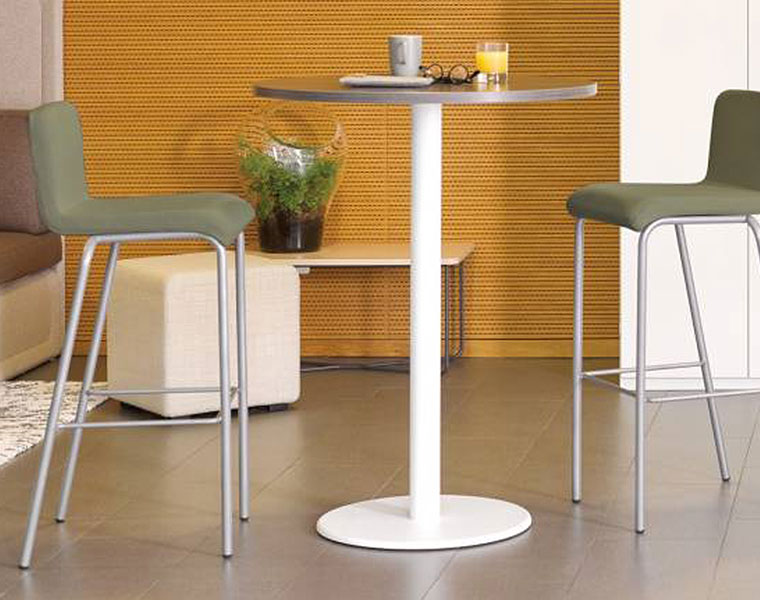When it comes to office design, fit out and refurbishment, we strongly believe that for any commercial interior scheme to be successful, it must be entirely human-centric. The configuration, furniture and technology employed within any workspace must be user-focused and meet the requirements of those who will be inhabiting it.
For this reason, we champion the concepts of agile working and activity-based work (ABW) and creating an ecosystem of diverse neighbourhoods and microenvironments to provide choice and control for staff. We promote the idea of employees moving freely around the space and that they should have a selection of different work words and postures to choose from throughout the day.

What is perhaps less well covered and what we now want to shine the spotlight on is the transition and touchdown areas between these dedicated settings.
For example:
What happens when a member of staff has been working in a collaboration space for a few hours but needs to break away to attend a meeting in a separate meeting room? Where can they quickly check their emails, respond to a text message or pull up notes for the meeting on their laptop without having to return to an assigned workstation or locate space on a hot desk?
That’s where transition and touchdown spaces come in.

What are transition and touchdown spaces?
The term ‘transitional space’ is sometimes used to describe a workspace which can be easily reconfigured or adapted within the commercial interior design industry; one which can transition from one function or purpose into another.
In this context, however, we are referring to areas of the workspace which connect the ecosystem of larger settings – the pit stops between A and B which are not being optimised for use by many businesses.
Transition and touchdown spaces provide staff with a quick, temporary solution to impromptu or immediate tasks such as: answering the phone, checking emails, sending a text message, sitting to wait for a short period of time or conducting an unplanned conversation with a colleague as they move around the workspace.

This type of work setting can come in a variety of different formats:
- Waiting areas and welcome spaces – This is the most obvious type of transition space and one which needs some careful design consideration. Read our tips on the importance of a welcoming reception area.
- A touchdown area outside a meeting room – If a meeting room is occupied or a meeting overruns, it’s good to provide those waiting with somewhere to settle and put down their things for a short period of time.
- Unobstructed space for work while walking – A study by Stanford revealed that creative output increased by an average of 60% when walking. This demonstrates how making the physical transition around the workspace more productive is so essential.
- Pull-up work at the desk – A member of staff might be on their way to the resource area or to another work setting and a colleague calls them over to their desk to discuss something. It’s important to make this type of short-term collaboration easy and effective.
- Purpose-built lounge areas – This type of setting ties in closely with social spaces and rejuvenation spaces and comprises a relaxation space where people can wait temporarily or take a phone call in comfort, for example.

The products you need for your transition and touchdown spaces
Of course, these workspaces will only be effective if they are designed strategically and fitted with the right furniture and resource. Here are some top-level recommendations from our experts:
- Furniture which doesn’t require much adjustment – For short-term tasks and temporary use, staff don’t want to have to waste time readjusting furniture.
- Meeting and privacy booths – These are recommended for impromptu meetings or personal phone calls which might require semi-enclosure or complete seclusion.
- Modular and pull-up seating solutions – Fluidity of movement around the workplace and agile working means location and timing of collaboration can’t always be planned for. Furniture such as stools, balls or modular seating which can be easily moved around the space where it needs to be (e.g. at a colleague’s desk) is an effective solution.
- Poseur tables and high stools – The ideal place to perch or set down a laptop when moving around the workspace without having to sit down and settle into a designated setting.
- Soft seating and lounge furniture – Sometimes, a transition or touchdown space may just be a couple of soft seats or sofa with a coffee table in a small corner of the office.
- Integrated power and connectivity – In our constantly connected generation, it’s important to provide staff with access to power and internet connectivity so that they can perform tasks away from the desk without disruption.
- Multifunctional storage solutions – This could be a pedestal on castor wheels, for example, which provides a temporary seating solution and a place to keep personal belongings for a short period of time.
